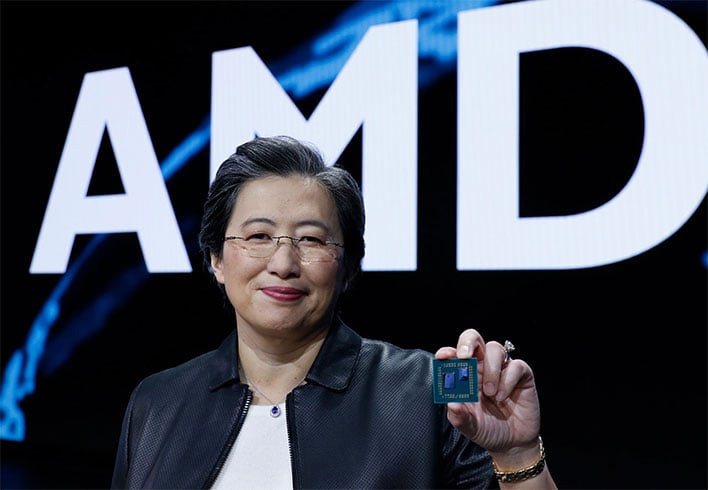AMD's Lisa Su Talks Zen 3, Next-Gen Consoles, And Ramping Radeon DNA

Like a basketball player that has suddenly caught fire and can't miss a shot, Advanced Micro Devices (AMD) finds itself in a zone, the result of hard work and capable leadership guiding the company's success. Part of what's interesting about this is it was not always a given AMD would get to this point. It has, though, and looking ahead, AMD is confident about where it is going, too.
This might be lost on some investors. Coming off its most successful quarter (in terms of revenue) since 2005, AMD's share price actually declined a tick. Such is the wild world of investing. A look back over time, however, paints a different picture. You don't even have too look back far—at the end of September, AMD's share price sat a penny under $29, versus trading at $35.18 (up 21.35 percent) at the time of this writing.
AMD's resurgence is largely tied to its Zen architecture, though that is oversimplifying things. More recently, the company's move to 7-nanometer manufacturing while its rival Intel is still struggling to gain momentum at 10nm tells a more intricate story. It's more of a chapter, really, because the story is still unfolding.
Looking down the line, AMD CEO Dr. Lisa Su expects to keep the momentum going with upcoming product launches. During an interview with VentureBeat, Dr. Su touched on a number of topics, including AMD's battle with Intel for market share.
"We’re pretty pleased with the market share gains. When we look at market share, you have to look at it over a period of time. In any given quarter you could see some anomalies. But yeah, I think we’ve made good progress over the last seven or eight quarters. Certainly on the PC side, and then on the server side we’re picking up as well. We have good progress overall in market share," Dr. Su said.
We can see a little of that in recent CPU sales data shared by Mindfactory, one of the largest computer hardware retailers in Germany. But aside from the raw numbers, one thing Dr. Su made clear is a desire to compete in multiple different segments.
"We want to be an end-to-end supplier, whether you’re talking about PCs or talking about servers. The mix of the business has been strong. On the desktop side, Ryzen 9 and Ryzen 7 are very popular, and then on the EPYC side, on the higher-end of core counts as well," Dr. Su said.
Some of that desire will be made visible in the coming weeks, with the launch of the 16-core/32-thread Ryzen 9 3950X in the mainstream desktop CPU category, along with third-generation Threaderipper processors for the high-end desktop (HEDT) market. Then further down the line, AMD will make another play in the console market by powering both Sony's PlayStation 5 and Microsoft's next Xbox (Project Scarlett) in late 2020.
We'll have to wait and see how things play out longer term. That said, it seems more likely than not that AMD will continue to execute for at least the next few years, which is not a feeling we had prior to Zen.

